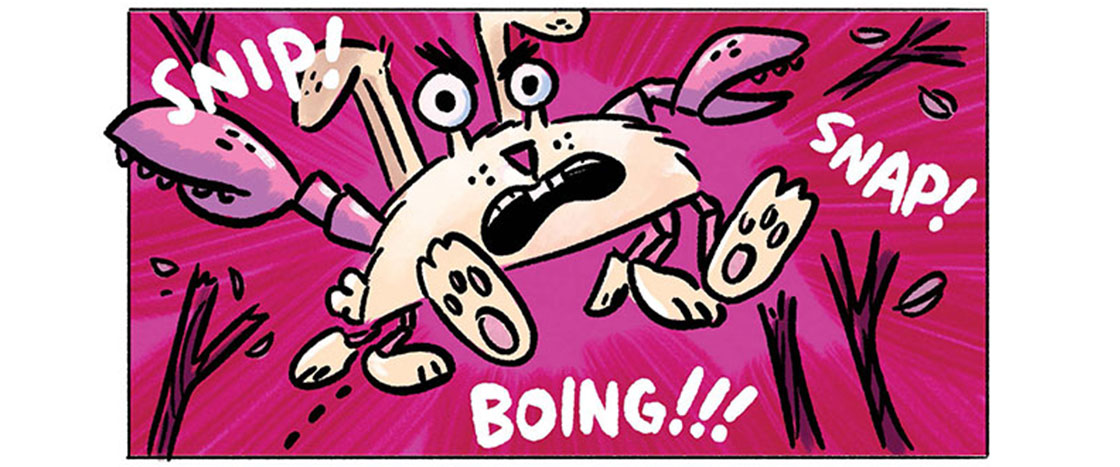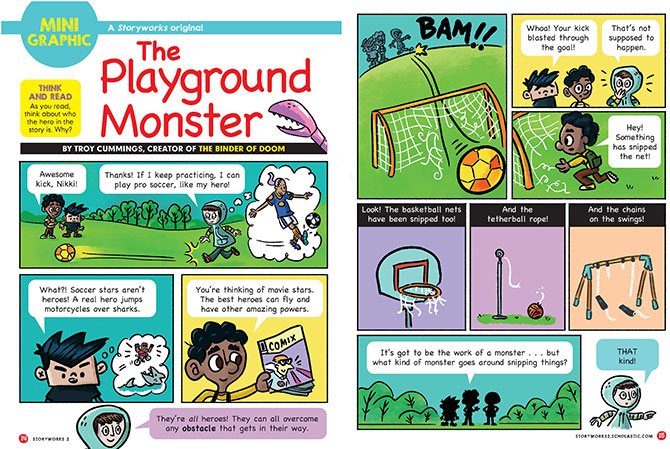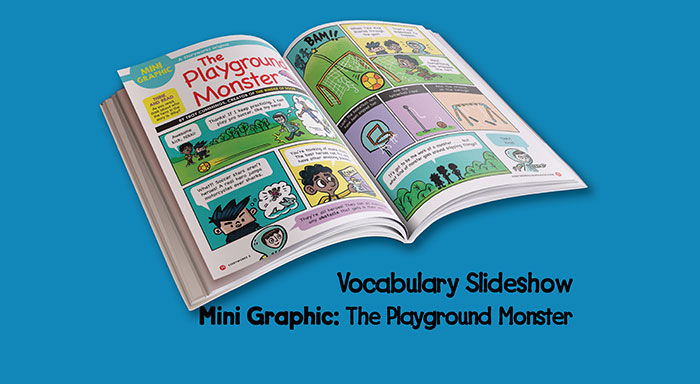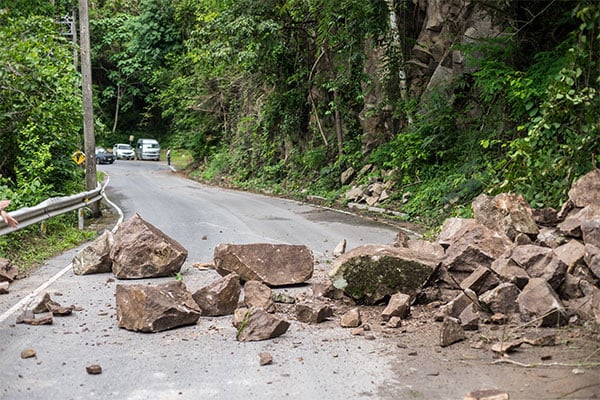The big question of this issue of Storyworks 2 is: What makes a hero?
- Reading and discussing “The Playground Monster” along with the other hero-themed texts in the magazine (the nonfiction article “The Dog That Saved a Town,” the fiction story “The Space Rock,” and the poem “Hero”) should give kids wonderful insight into what it means to be a hero in the world.
- Through the above genres, students will discuss: What traits do heroes have? How do heroes act? What does it mean to be a good person?
- “The Playground Monster” also stands on its own. It’s not only super fun, but it also gives kids great experience reading and thinking about graphic novels as a literary form.















Social-Emotional Learning Focus